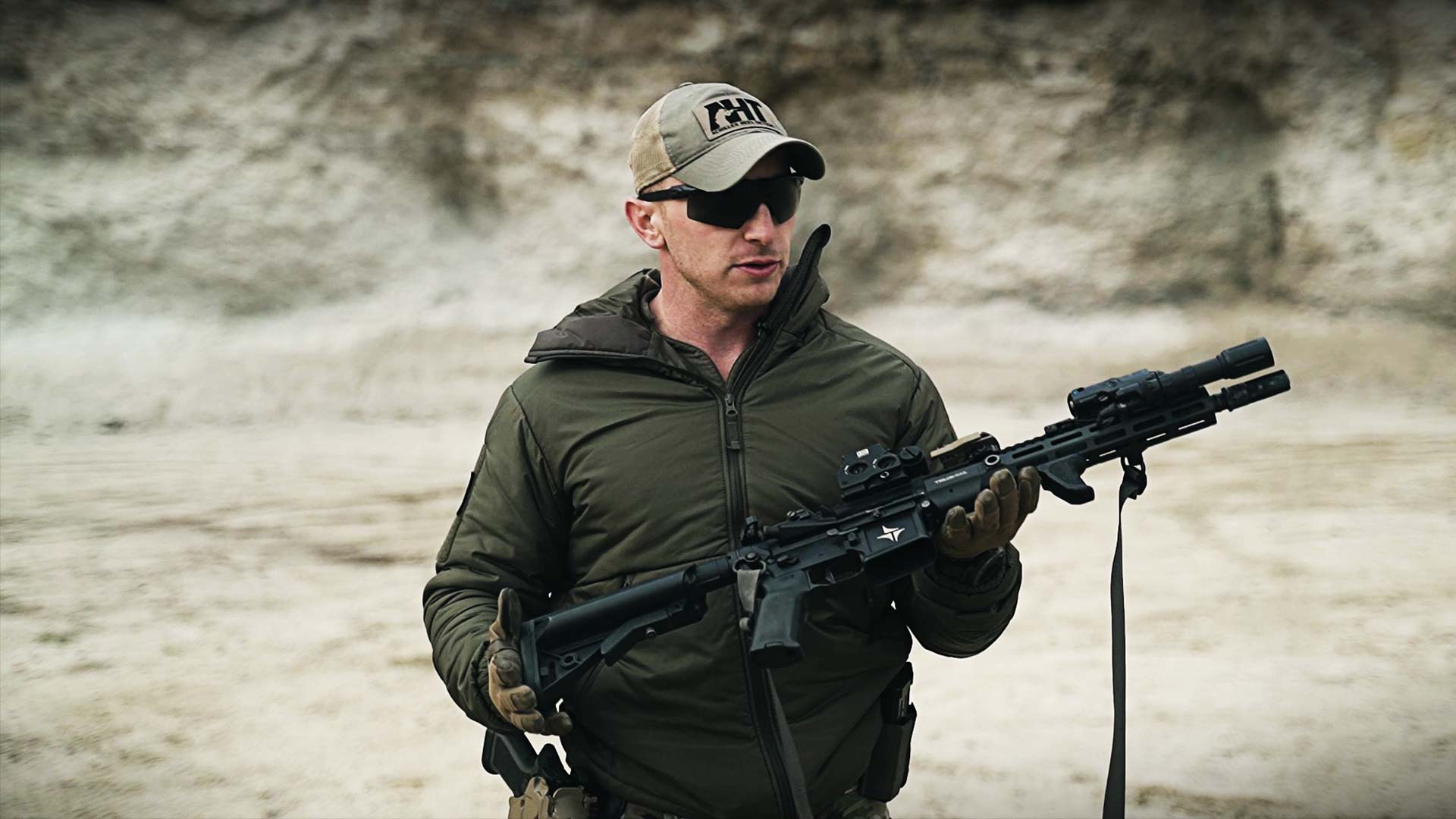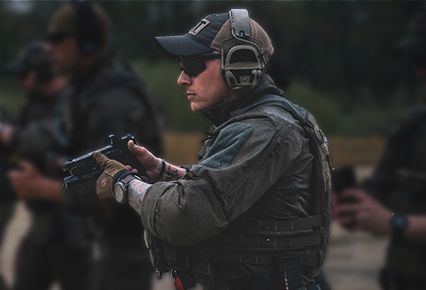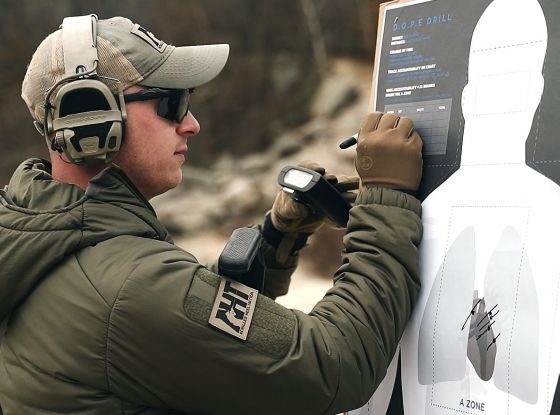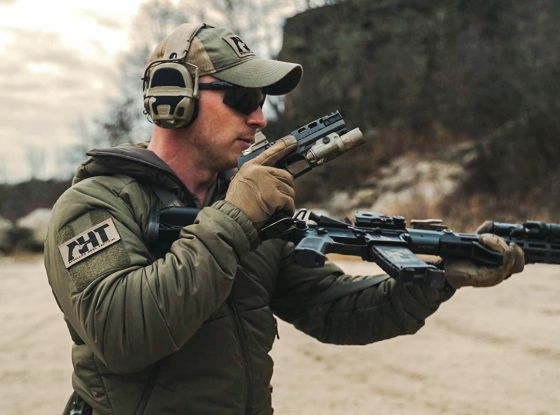Being able to hold that sight alignment despite the motion of pressing the trigger is an important fundamental to master whether you're practicing with your carbine down at the rifle shooting range on a quiet Sunday afternoon or you're squaring off against an armed bad guy in hostile territory.
In this blog post:
In our last post, we discussed how to refine the sight picture of your carbine rifle so that you can achieve sight alignment and thereby put your shots exactly where you want them to land on the target.
In this post, we'll talk about how to avoid disrupting that sight alignment as you manipulate the trigger.
Trigger manipulation
There are two types of trigger manipulation in rifle shooting: continuous motion and interrupted motion.
Continuous motion
Continuous-motion trigger manipulation entails depressing the trigger straight back without first taking up any of the slack after you’ve properly placed your finger on the trigger.
Because straight-back-to-the-rear produces potentially significant sight-alignment disruption, you need to recognise that there is a proper time and place for utilising continuous-motion trigger manipulation.
One of these is the situation where you need to clear a confined space. In such an op, you may need to instantly engage one or more hostiles; consequently, you’ll likely be forced to line up each shot without the benefit of the target being within your rifle’s sights.
Interrupted motion
Interrupted motion is a rifle trigger-control technique used when the sight alignment is disrupted. In a nutshell (or a brass shell, as the case may be), the technique entails pausing the rearward motion of the trigger until sight alignment is restored.
Experts recommend that on those occasions when you are able to be within your rifle’s sights you strive for as much interruption within the trigger press as possible. To do this, you first of all need to find the correct placement of the isolated finger joint you’ll be using to manipulate the trigger straight back into the rear.
Typically, ideal placement occurs at approximately the halfway point between the tip of your index finger and that digit’s first joint. Not coincidentally, that section of your finger possesses the fine degree of sensitivity required to let you press the trigger with optimal firmness and steadiness. Also involved in the act of manipulating the trigger straight back will be the section of that finger from the first joint to the joint at the first knuckle.
Expect to encounter slack if your weapon has either a single-stage or two-stage trigger. In that event, you’ll need to prep the trigger by taking up the slack until you reach the trigger’s wall. The trigger’s wall is the point at which you first encounter resistance while applying finger pressure to the trigger.
Upon reaching the wall, apply steady, firm pressure on the trigger: but, as you do this, be careful not to disrupt your sight alignment. Finally, allow the trigger to break on its own.
If you correctly executed those steps, you’re almost sure to achieve full accountability for your shots. Assuming of course that you in some other way didn’t disrupt sight alignment and that you remembered as mentioned in our previous post to account for mechanical offset within your refined sight-picture.
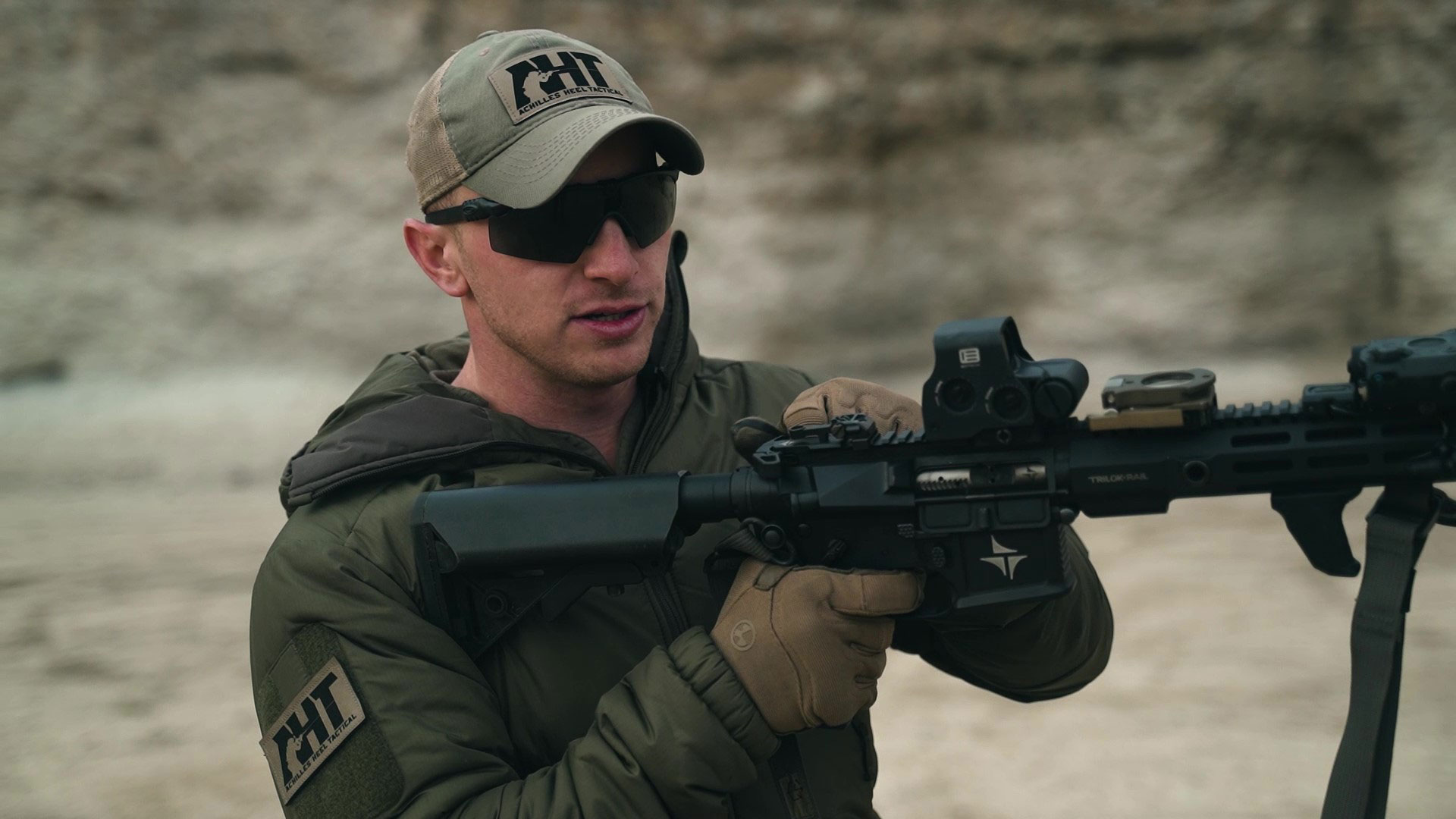
Breathing
A question often asked is, should breathing be a factor in trigger manipulation. The answer is it depends on the circumstances.
Breathing isn’t (or at least it shouldn’t be) a consideration when firing the weapon while you’re advancing on the target. On the other hand, breathing is a consideration when you’re performing long-distance zeroing.
Breathing while moving
When you’re in a close-quarters combat environment, you likely won’t be able to completely mitigate the extent to which your breathing disrupts sight alignment. In this environment, the stock of your rifle will be abutting your thoracic cavity which will expand as you inhale and contract as you exhale, so sight-alignment disruption will be hard to avoid.
The important thing is that you remember to breathe. Your reflexive response to the sky-high stress of being in a CQB situation is to hold your breath, and that’s unhelpful. However, owing to the necessity of natural continuous breathing, you needn’t try to shoot only during the pause between breaths.
If you take the proper steps to mitigate the effect of breathing while embroiled in a CQB engagement (a topic for another post) you should still be able to hold your rounds accountable every time you press the trigger.
Long-distance zeroing - find your pause
At just about all other times, but especially when you are zeroing the weapon or taking long-distance shots, you must find the natural respiratory pause and only during that respite fire the round.
Failure to do so risks disrupting the sights at a moment when you can least afford to have your aim skewed. Even the slightest movement during inhalation or exhalation can be sufficient to cause your shots to miss their mark.
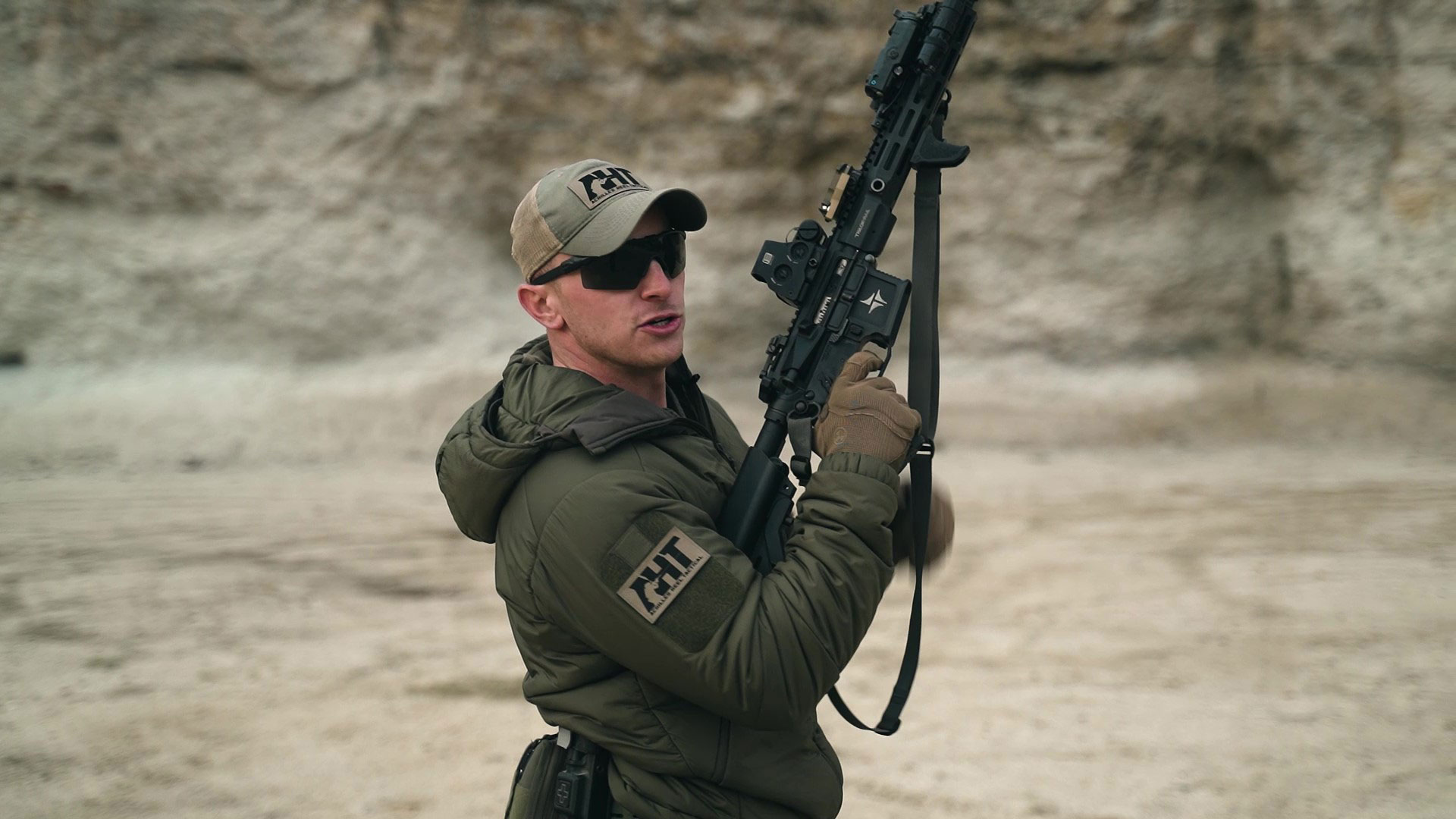 >
>
Follow-through steps
Here in summation are the steps that, if followed through, should result in highly accurate shooting and full accountability for your shots.
Step 1: Establish good stance and posture
Step 2: Correctly grip the weapon with your dominant- and nondominant-side hands
Step 3: Achieve gross and then refined sight-picture
Step 4: Account for mechanical offset to create sight alignment
Step 5: Control the front end of the gun and reset the sight alignment upon recoil impulse
Step 6: Reset the trigger
Regarding that final step, resetting the trigger: after the trigger breaks, continue holding it in the fully depressed position as you check to make sure your sight alignment is still good. If it is, then with your isolated joint still positioned on the trigger, slowly release the trigger to its reset point.
Note that on some weapons, the trigger reset is gas operated, which eliminates the need to hold the trigger in its fully depressed position as you verify the integrity of your sight alignment.
Conclusion
Good manipulation of the trigger is an essential skill for improved shooting. To put the rounds exactly where they are supposed to go, you need to appreciate the difference between continuous motion and interrupted motion when it comes to trigger control. You also need to understand the effect of breathing in various types of shooting.
For a more visual presentation of this topic, we encourage you to view Episode 4 of UF PRO’s Pro’s Guide to Rifle Fundamentals. In that installment of this series, former SWAT team member and certified firearms' instructor Rick Crawley gives a field demo you won’t soon forget.

